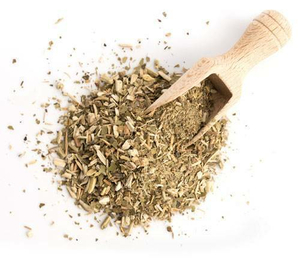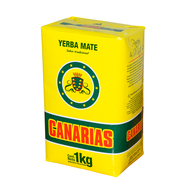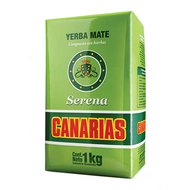General
Yerba mate or Ilex Paraguariensis is the name of a tropical tree that could be originally found in the basins of the Upper Parana River, Upper Uruguay River and some tributaries of the Paraguay River, where it grows wildly. The mate, is a hot bitter brew, prepared with yerba mate, which consists on the dried leaves and sticks of the Ilex Paraguariensis tree.
The mate is the most common brew in South American countries like Paraguay, South Brazil, Argentina, South-East Bolivia, Uruguay and some parts of Chile. The term mate, poro or porongo is used to refer to the vase in which the mate is prepared an served.
The Ilex Paraguariensis can grow up to 15 meter (49 ft) tall. The stems are straight and cylindrical and can be measured up to 30 cm (12 inches) in diameter. The branches come out of the tree in a right angle and the leaves are rounded and show a dark green color.
Nutritional information
Its consumption isn't only oriented to social uses, the yerba mate also provides several nutrients as well as proteins. The human body needs 13 vitamins, 8 of which belong to the B group, which can be found in the yerba mate, for example, Vitamin A, B1, B2, B3, B5, C and E. These are vital for body functions such as energy and red blood cells production. It contains potassium and magnesium, among other minerals like phosphorus, calcium, iron and magnesium. These help with the correct functioning of the cardiac activities and allow the body to incorporate proteins.
Direct uses and industrial applications
According to a market research held in Argentina, mate can be found in over 90% of Argentinian homes. It is prepared and drank during breakfast, informal gatherings, with friends, family, individually and all day long!
Market overview and production
The yerba mate is widely commercially cultivated in Argentina, Brazil and Paraguay since the 19th century. This three countries represent the main and most recognized yerba mate growing production, two of them centralize over 90% of the worldly yerba mate production.
Argentina owns the first place as the world's largest yerba mate producer with around 700 thousand tonnes a year (between 56 and 62% of the global amount), followed by Brazil with around 500 thousand (between 34 and 36%) and Paraguay with 50 thousand (5%).
Frequently asked questions
How to prepare a mate? First, choose a mate, it can be made out of glass, wood, or the traditional mate and fill it with yerba mate up until you reach 3/4 of the vase. Mix the yerba until every bit of it becomes homogeneous. Moisten the yerba with warm water before introducing the metal straw. Doing this, we allow the yerba to release all it components during the brewing. Finally, carefully put a little bit of water near the straw, so as not to wet all the yerba. The water must be at around 167 and 176 degrees Fahrenheit or between 75 to 80 degrees Celsius. Repeat this last step and enjoy some delicious mates!
What are some of the yerba mate benefits? Mate is a powerful anti-oxidant, a vitamin and mineral provider, lowers bad cholesterol and has an energizer effect.
What does the yerba mate fruit look like? The yerba mate fruit grows next to the flower and has the appearance of a small red ball. The tree seeds have a shell that covers them so that, when they falls to the ground, they don't disintegrate or germinate on their own.
How is the growing process of the yerba mate? The yerba mate requires a tropical weather and a high humidity, as well as frequent precipitations, specially during the flowering. The optimal temperature is around 68 Fahrenheit or 20 degrees Celsius, but it can still stand a mild frost. Finally, the soil needs to be lightly acid, sandy and finely textured.
How is the yerba mate planted? Traditionally, yerba mate was only cultivated for extraction. However, this practice is no longer valid today. The sowing takes place from March to May, distributing the seeds on the surface of the seedlings in quantities of 250 to 500 grams (9 to 17 oz) of seeds per square meter and then covering it with a thin layer of soil.
Common misspellings and related terms
The action of pouring hot water into the mate and serving it is called "cebar", and the typical metal straw that helps you drink it is the "bombilla". The word mate has its origins in the Quechua word "Mati", which means squash, since there is a variant of this vegetable that was (and is still to this day) used as the vase in which the mate is prepared. The correct pronunciation of the word "mate" is "MAH-teh"
Related products and ideas
However, the yerba mate isn't only used to prepare the traditional hot brew. By infusing the yerba, the possibilities of flavor are endless. Preparations such as, juices, shakes and even cakes are very common and delicious in any mate drinking countries.
But yerba mate can also be found in other formats, for example, mate cocido. It consists, basically, in yerba mate in teabags, which makes its preparation considerably simpler than the mate itself, since it is prepared as you would normally prepare tea. Try it out!
Terere is, in essence, cold mate. In some countries, it is simply prepared with cold instead of hot water, but it can also be found prepared with your favorite flavor juice. The contrast between the bitter flavor of the yerba and the sweetness of the juice lead to an amazingly refreshing drink.
For the sour flavor lovers, there is the grapefruit mate. Simply cut a grapefruit's top and empty its insides. After that, fill it with yerba mate and you got yourself a fruity mate!
No reviews found
Complete your purchase on Pampa Global
We’ve simplified the checkout process! Orders are now completed through Pampa Global, our new platform that offers:
- Fast and secure checkout
- Extensive international catalog
- Competitive wholesale pricing










